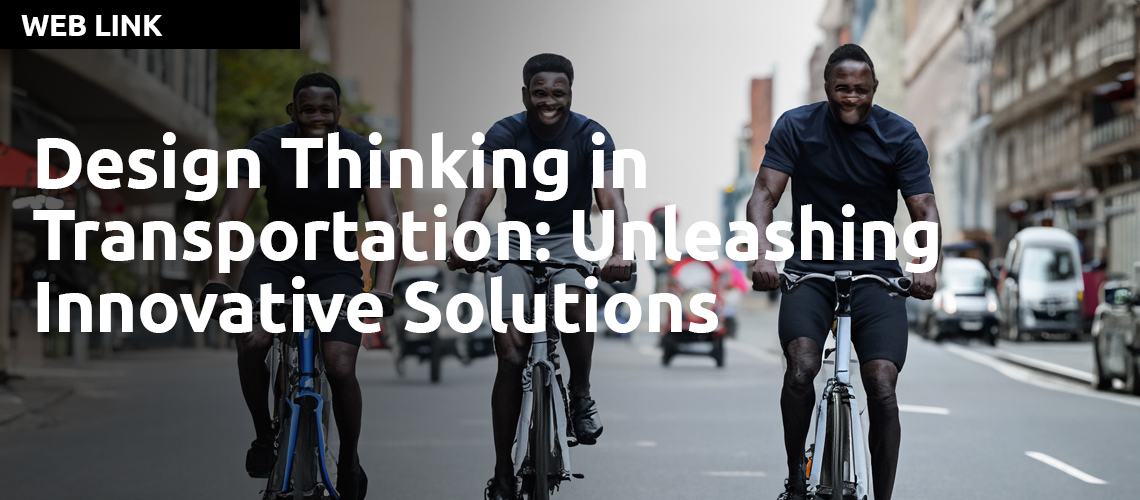
Design thinking, a human-centered problem-solving approach, has revolutionized various industries by fostering innovation and addressing complex challenges. In recent years, this methodology has gained prominence in the transportation sector, transforming the way we approach mobility and infrastructure. By focusing on understanding user needs, iterating prototypes, and fostering collaboration, design thinking has enabled transportation experts to develop creative solutions to improve efficiency, safety, and user experience.
This article explores the diverse applications of design thinking in transportation through ten inspiring examples. Each case study showcases how design thinking has played a crucial role in addressing specific transportation challenges, ranging from urban mobility to logistics and sustainability. By examining these examples, we can grasp the potential of design thinking to drive positive change in the transportation industry.
-
Redesigning Urban Bike Infrastructure. Design thinking has been instrumental in transforming urban cycling infrastructure. The City of Copenhagen, Denmark, employed design thinking principles to develop innovative bike lanes, traffic management systems, and parking facilities. By empathizing with cyclists, conducting field research, and prototyping solutions, Copenhagen revolutionized urban cycling, resulting in increased ridership, improved safety, and enhanced accessibility. (Reference: City of Copenhagen - Bicycle Program)
-
Revitalizing Public Transit. Transportation agencies worldwide are embracing design thinking to revitalize public transit systems. For example, the Massachusetts Bay Transportation Authority (MBTA) utilized this approach to improve the user experience. Through human-centered research and iterative design, MBTA implemented changes such as redesigned station layouts, improved signage, and enhanced digital tools. These efforts increased ridership and customer satisfaction, demonstrating the potential of design thinking in reimagining public transportation. (Reference: MBTA Better Bus Project)
-
Enhancing Airport Experience. Design thinking has been leveraged to enhance the airport experience by streamlining processes and improving passenger satisfaction. Singapore's Changi Airport is a notable example, where this methodology was used to reimagine airport facilities and services. The airport implemented concepts like interactive wayfinding, self-check-in kiosks, and immersive leisure spaces to create a seamless, enjoyable journey for passengers. The result was increased customer loyalty and recognition as one of the world's best airports. (Reference: Changi Airport Group)
-
Optimizing Last-Mile Delivery. E-commerce's rapid growth has necessitated innovative solutions for last-mile delivery. Design thinking has played a pivotal role in this domain, enabling companies like Amazon to develop new approaches. By employing user research, Amazon explored alternatives such as drone delivery, lockers, and crowd-based delivery networks. These initiatives focused on improving convenience, reducing costs, and enhancing sustainability in the final leg of the delivery process.
-
Reducing Traffic Congestion. Design thinking can also address the pressing issue of traffic congestion. In Stockholm, Sweden, the city successfully implemented the Stockholm Congestion Tax through a design thinking lens. By involving citizens, analyzing data, and experimenting with pricing structures, the city reduced traffic congestion and improved air quality, creating a more livable urban environment.
-
Designing Smart Parking Solutions. Design thinking has been applied to optimize parking systems in urban areas. By integrating digital technologies, sensors, and data analytics, cities like San Francisco have developed smart parking solutions. These initiatives provide real-time information on parking availability, reduce traffic caused by drivers searching for parking, and improve overall parking management efficiency.
-
Creating Inclusive Mobility Solutions. Design thinking promotes inclusive mobility solutions that cater to diverse populations. One notable example is the inclusive design approach adopted by the transportation company Uber. By considering the needs of individuals with disabilities, Uber developed features like UberACCESS and UberASSIST, providing accessible transportation options for all users. These initiatives not only enhanced mobility for people with disabilities but also fostered a more inclusive transportation ecosystem.
-
Designing Future Autonomous Vehicles. Design thinking is crucial in shaping the future of autonomous vehicles. Companies like Tesla and Waymo have embraced this approach to develop user-centered autonomous driving experiences. Through iterative prototyping and user feedback, they have refined the design of autonomous vehicles, considering factors such as user trust, comfort, and safety. These efforts are instrumental in overcoming challenges and building public acceptance of self-driving technology.
-
Rethinking Urban Space with Tactical Urbanism. Design thinking plays a vital role in implementing temporary urban interventions to reimagine transportation infrastructure. Tactical urbanism initiatives, such as pop-up bike lanes and pedestrian-friendly plazas, have gained popularity worldwide. By employing design thinking principles, cities like New York and London have quickly transformed streetscapes, providing evidence for permanent infrastructure changes.
-
Fostering Sustainable Transportation. Design thinking is instrumental in promoting sustainable transportation solutions. The Netherlands' approach to sustainable mobility, exemplified by initiatives like the Hovenring, showcases the integration of design thinking principles. By prioritizing human experience, safety, and aesthetics, the Hovenring elevated the experience of cyclists and pedestrians while minimizing the ecological footprint.
Design thinking has emerged as a powerful tool in revolutionizing the transportation industry. By embracing user-centered approaches, iterative prototyping, and collaboration, transportation stakeholders have addressed various challenges and created innovative solutions. The examples discussed in this article highlight the transformative impact of design thinking, spanning diverse aspects of transportation, from urban mobility and public transit to logistics and sustainability.
As the transportation landscape continues to evolve, design thinking will remain crucial in fostering innovative and human-centered solutions. By empathizing with users, harnessing emerging technologies, and promoting collaboration, transportation experts can unlock the full potential of design thinking to shape the future of mobility.
